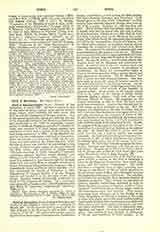

Cyril of Constantinople, Saint, General of the Carmelites, d. about 1235. All that is known is that he was prior of Mount Carmel, some say for twenty-seven, others, more correctly, for three years, and that he had the reputation of being a prophet. One of the pseudo-prophecies, given out towards the end of the thirteenth century by the Franciscan Spirituals, and attributed to St. Cyril of Jerusalem, became known to Guido de Perpignan and other Carmelites at Paris, who ascribed it to their former general, now considered a saint and a doctor of the Church, his feast being introduced in 1399. In the Breviary lessons he was also confounded with Cyril of Alexandria. When the mistake was discovered (1430, but the confusion was maintained in the Venice Breviary, 1542), his title of doctor was justified by attributing to him a work, of which no trace exists, on the procession of the Holy Ghost. The prophecy or angelic oracle “Divinum oraculum S. Cyrillo Carmelite Constantinopolitano solemni legatione angeli missum” (ed. Philippus a SS. Trinitate, Lyons, 1663), so called because it is supposed to have been brought by an angel while Cyril was saying Mass, is a lengthy document of eleven chapters in incomprehensible language, with a commentary falsely ascribed to Abbot Joachim. It is first mentioned by Arnold of Villanova, c. 1295; Telesphorus of Cosenza applied it to the Western Schism and treated it as an utterance of the Holy Ghost. Another writing erroneously attributed to Cyril is “De processu sui Ordinis”, by a contemporary, probably a French author; edited by Daniel a Virgine Maria in “Speculum Carmelitarum” (Antwerp, 1680), I, 75.
B. ZIMMERMAN

